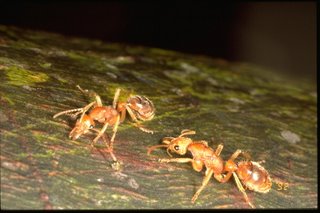Cimzia
Certolizumab pegol (CDP870) is a PEGylated Fab' fragment of a humanized anti-TNF-alpha monoclonal antibody. It is the subject of phase III clinical trials in both Crohn's disease and rheumatoid arthritis. Significant positive results have been demonstrated for two pivotal phase III trials (PRECiSE 1 and 2) of certolizumab pegol in moderate to severe active Crohn's disease. In addition, data from both trials suggest it is well-tolerated.
Analysts reckon Cimzia has blockbuster potential. What other Crohn's disease drugs are on the market, and how is Cimzia different?
The biggest rivals are Remicade from Johnson & Johnson and Abbott's Humira, a drug currently approved for use in rheumatoid arthritis that's expected to gain additional approval for use in Crohn's.
Both of these drugs are monoclonal antibodies, which are derived from very large molecules. These drugs require a lengthy, complex, and expensive manufacturing process. Because they're large molecules, they tend to penetrate tissues poorly, so they must be administered by injection. Also, these larger antibodies can often trigger unwanted immune responses.
In contrast, Cimzia is the next generation of antibodies. We use the smallest possible fragment of an antibody, called a nanobody. As these nanobodies are much smaller, they're able to penetrate tissue in the body more easily. The big advantage with nanobodies, we believe, is that it requires a much simpler manufacturing process, which means that over time it will be a lot less expensive than monoclonal antibodies to produce.
The way Cimzia is administered is also unique. While Remicade is given by an intravenous infusion at the doctor's office or hospital, Cimzia is the first Crohn's drug that is able to be given by injection through the skin. It's similar to the way diabetics are able to self-inject insulin.
Of course, what really matters is efficacy. And we're very happy with the significantly positive late-stage clinical results, which is why we submitted a biologics license application with the U.S. Food & Drug Administration in February.
1
2





